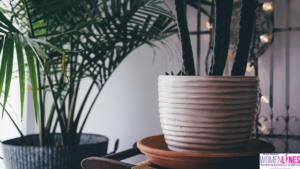Positivity Blooms, Indoor Air-Purifying Plants
Transform your living space into a haven of positivity with air-purifying plants. This curated list highlights ten plants renowned for both their aesthetic charm and the ability to enhance indoor air quality, fostering a healthier and more uplifting environment.
In today’s fast-paced and often stressful world, creating a positive and healthy environment at home is essential for our well-being. One effective way to achieve this is by incorporating indoor plants that not only add a touch of nature but also act as air purifiers. Among the plethora of options available, here’s a curated list of plants known for their positive energy and air-purifying qualities:
Snake Plant (Sansevieria trifasciata)
- Placement: Ideal for bedrooms and living rooms, the snake plant thrives in indirect sunlight.
- Benefits: Known for releasing oxygen at night, it helps improve indoor air quality by removing toxins like formaldehyde and benzene.
- Care: Requires minimal maintenance. Allow the soil to dry between watering and avoid overwatering.
Broken Heart (Hoya Kerrii)
- Placement: A unique heart-shaped succulent, it can be placed on windowsills or as a centerpiece.
- Benefits: Aside from its charming appearance, it symbolizes love and positivity, making it a perfect addition to any space.
- Care: Requires well-draining soil, and moderate sunlight. Water sparingly to prevent root rot.
Bamboo Plant (Dracaena sanderiana)
- Placement: Feng Shui enthusiasts often recommend placing bamboo in the living room or the southeast corner for prosperity.
- Benefits: Known for bringing good luck and positive energy, bamboo also helps filter out pollutants.
- Care: Keep the soil consistently moist but not waterlogged. Provide bright, indirect sunlight.
 Chinese Evergreen (Aglaonema)
Chinese Evergreen (Aglaonema)
- Placement: Thrives in low light conditions, making it suitable for bathrooms or offices with limited natural light.
- Benefits: Filters out common indoor air pollutants and is believed to bring good fortune.
- Care: Allow the soil to dry between watering. Tolerant of low humidity and low light conditions.
Dragon Tree (Dracaena marginata)
- Placement: A versatile plant that adapts well to different light conditions, but it flourishes in bright, indirect sunlight.
- Benefits: Removes pollutants like xylene, trichloroethylene, and formaldehyde from the air.
- Care: Water moderately, letting the top inch of soil dry out before watering again.
Spider Plant (Chlorophytum comosum)
- Placement: Ideal for hanging baskets or as a tabletop plant, it prefers bright, indirect light.
- Benefits: Known for its air-purifying qualities, effectively removing pollutants such as formaldehyde and xylene.
- Care: Keep the soil evenly moist and provide moderate sunlight. Produces offsets (baby spider plants) that can be propagated.
Lemon Button Fern (Nephrolepis cordifolia ‘Duffii’)
- Placement: Perfect for bathrooms or kitchens, this fern thrives in high humidity.
- Benefits: Adds a refreshing lemon scent to the air and helps remove pollutants.
- Care: Keep the soil consistently moist. Provide indirect light and regular misting for humidity.
Pothos (Epipremnum aureum)
- Placement: Versatile and adaptable, pothos can be placed in hanging baskets or on shelves. It thrives in low to moderate light.
- Benefits: Removes indoor pollutants and is associated with good luck and positive energy.
- Care: Allow the soil to dry between watering. Tolerant of low light conditions.
English Ivy (Hedera helix)
- Placement: Suited for hanging baskets or as a trailing plant on shelves, English ivy prefers bright, indirect light.
- Benefits: Effective at reducing airborne mold and can help alleviate allergies.
- Care: Keep the soil consistently moist and provide good air circulation.
Rubber Plant (Ficus elastica)
- Placement: Best placed in well-lit areas but away from direct sunlight.
- Benefits: Removes pollutants and contributes to a positive atmosphere.
- Care: Allow the soil to dry between watering. Wipe the leaves occasionally to keep them dust-free.
In conclusion, incorporating these air-purifying plants into your home not only enhances the aesthetic appeal but also contributes to a healthier and more positive living environment. Each plant comes with its unique set of benefits, adding a touch of nature’s positivity to your daily life. Remember to consider the specific care requirements of each plant to ensure their well-being and longevity. As you care for these green companions, you’ll find that they not only improve the air quality but also bring a sense of calm and positivity to your home.
Also Read, Web3 in Education, Revolutionizing Learning for Tomorrow
Follow Womenlines on Social Media














